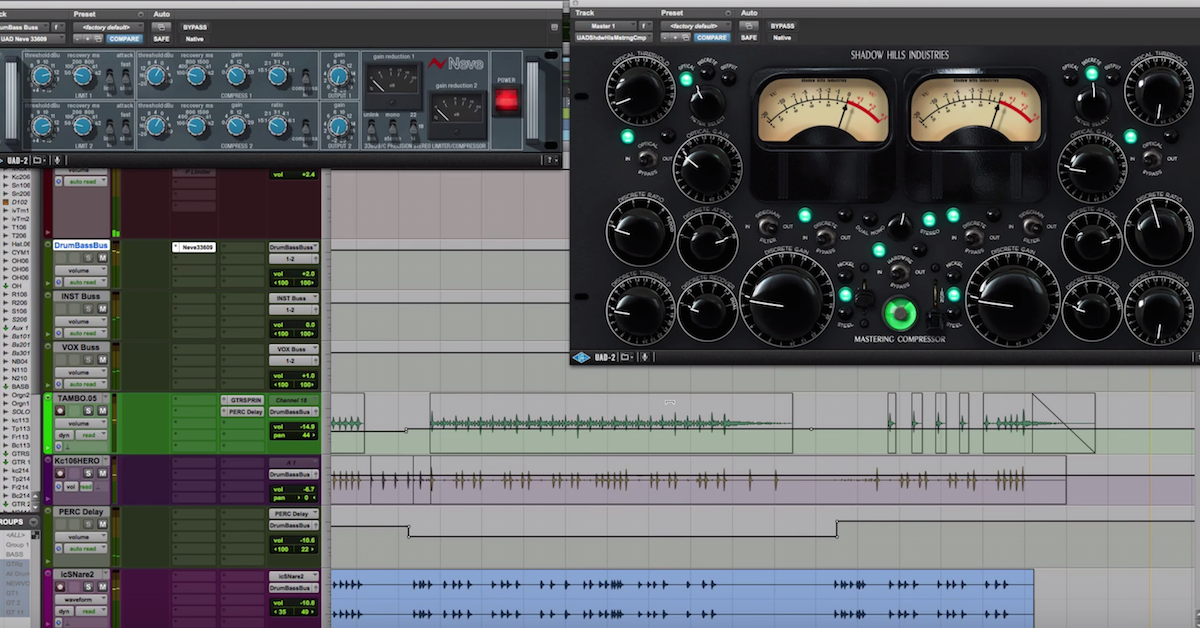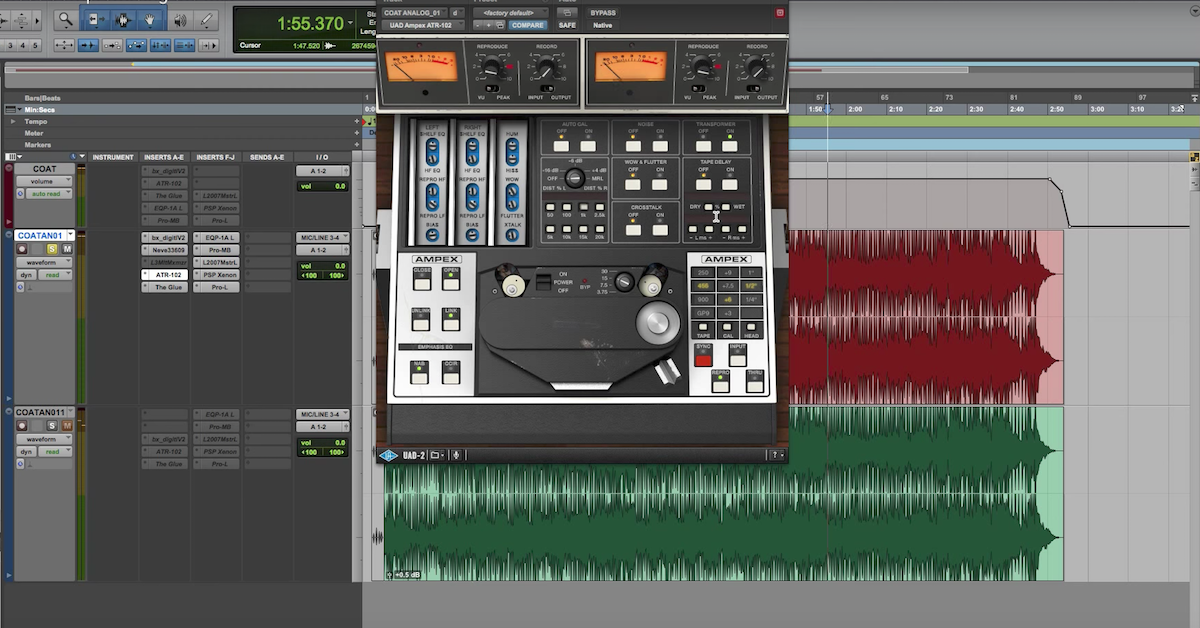How to Get an Intimate Mix with Dynamics Processing on the Stereo Buss
Now, you don’t always want to achieve mixes that sound really close and intimate and in your face, but in this case, because it’s this very bouncy pop song, that is definitely what the artist wanted, and what I was going for.
Specifically, the Shadow Hills mastering compressor and the Manley Massive Passive from Universal Audio, which are both emulations of actual hardware units, did the job.
Let’s go ahead and take a listen with them bypassed.
[mix with plugins bypassed]
Alright. Let’s make them active and take a listen.
[mix with plugins active]
Alright. Definitely a big difference there. We hear the drums are closer, we hear the vocal is closer, and the guitars are nice and sitting in a good spot to the left and right, and I credit a lot of the up-frontness to the Shadow Hills mastering compressor.
One of the great things about this compressor is that it is essentially two compressors in one. We have an Optical, and a Discreet, and I find that the Optical is really great for overall leveling of dynamics, and the Discreet is more for fine tuning, as you will see here, for the Discreet section, we have control over the ratio, the attack, which I have set to slow in this case, because I didn’t want to crush the transients, recover, which is another way of saying release, is set to pretty fast, which helps out with that intensity and closeness, and we also have three controls here – Nickel, Iron, and Steel, which represent types of transformers.
Nickel, which is subtle in coloration, Iron, moderate, and Steel, which is somewhat colored. So we also have a side-chain control. Choice over choosing dual-mono or stereo, and options to have our meters set to the optical, discreet, or main output.
Once again, let’s take a listen to the last chorus without the Shadow Hills.
[mix]
And if you’ll note, I have the threshold set so I’m not really doing more than 1dB of gain reduction at any time. So I’m not really crushing this, but I am using a good amount of make-up gain from the optical and discreet sections of this plug-in.
Next, let’s move to the Manley Massive Passive. We have four bands here: low, low-mid, high-mid, and highs, and controls over boost or cut, and shelf or bell. In this case, I’m boosting in the lows, cutting in the low mids, boosting with a bell in the high-mids, and a shelf boost with the highs.
Okay. So I am only doing about four dB of boosting at – you’ll see here, 47Hz. I am cutting at roughly 600Hz. Once again, about 4dB. I am boosting about 6dB – a good amount – at 10kHz, which I find adds some really nice air and clarity, and I am also boosting at 27kHz. Really opens up the mix, this plug-in.
I also have a little technique going on here where I have a low-pass filter that is engaged in the verses only. So, I wanted the verses to have more of a vintage sound, and I wanted that to go away when the choruses came in and opened up a lot. Let’s take a listen to that and pay attention to the automation here on the low-pass.
[mix]
I find that it really just helps with the clarity, and in fact, makes the space a little bit more interesting and defined. In fact, I’ve started to use this plug-in as an alternative to spatialization plug-ins like stereo exciters, because I find I can do the same thing with this Manley.
Alright, so if you’ve any questions or anything at all, make sure to get in contact. My name is Ian Vargo, and happy holidays! Bye!






